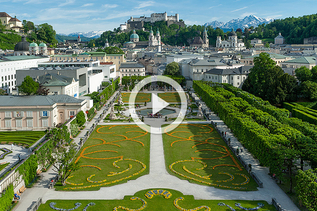
Salzburger Stier
Il toro di Salisburgo è uno dei pochi organi a canne tardo-gotici rimasti al mondo e si trova sulla fortezza di Hohensalzburg. È anche il più antico strumento musicale meccanico che viene suonato regolarmente.
L'arcivescovo Leonhard von Keutschach commissionò l'opera di corno nel 1502. Come in altre città, monasteri e conventi, aveva una funzione puramente segnaletica, ad esempio per svegliare i cittadini al mattino e ricordare loro l'ora di andare a letto la sera. L'opera di corno originale era composta solo da un cassa d'aria, un mantice e 135 tubi. L'accordo di Do maggiore dell'opera di corno somigliava al ruggito di un toro, così nel linguaggio popolare nacque il nome di toro di Salisburgo.
Circa nel 1640 fu acquistato un organo a rullo, che inizialmente suonava solo il cosiddetto "Antico Corale". Poco più di 100 anni dopo, il repertorio fu ampliato con 11 melodie dei kapellmeisters della corte Eberlin e Leopold Mozart, in modo che ogni mese avesse la propria melodia.
Oggi risuona l'accordo caratteristico di Do maggiore seguito da una delle 12 melodie ogni giorno poco dopo le 7, le 11 e le 18, subito dopo il carillon nel centro storico. Se il rumore circostante non è troppo forte, si può sentire bene il toro di Salisburgo da piazza del Duomo o piazza della Residenza.
Ulteriori 'tori di Salisburgo':
Toro di Salisburgo: Premio internazionale di cabaret radiofonico
La leggenda del lavatore di tori di Salisburgo
Impressioni
Video
Contatto
Mönchsberg 34
5020 Salzburg







